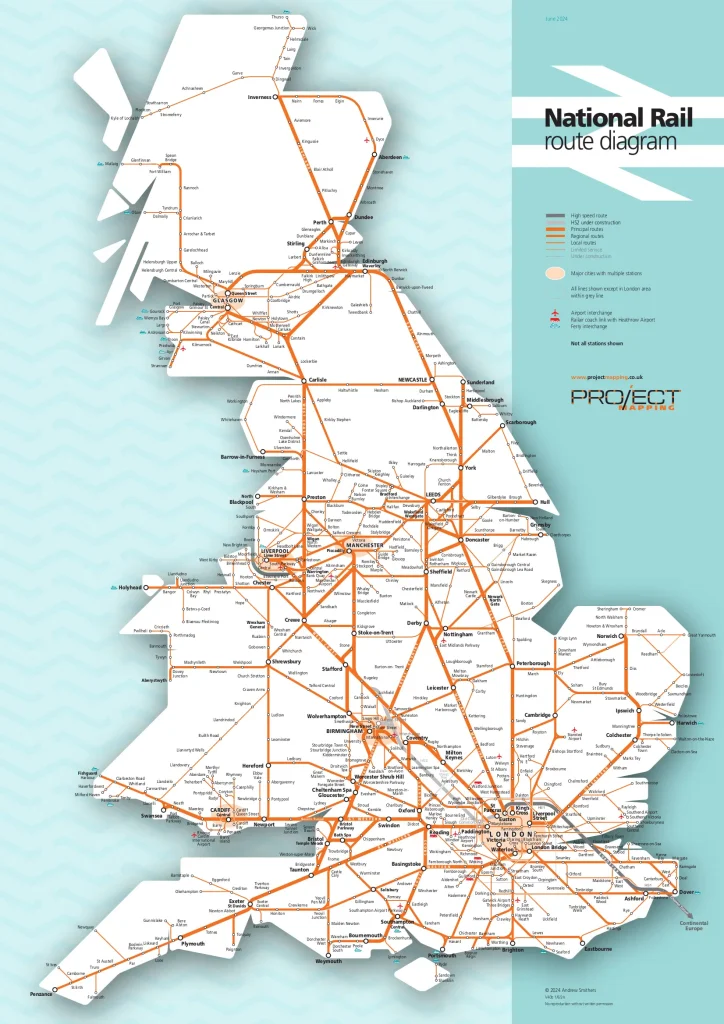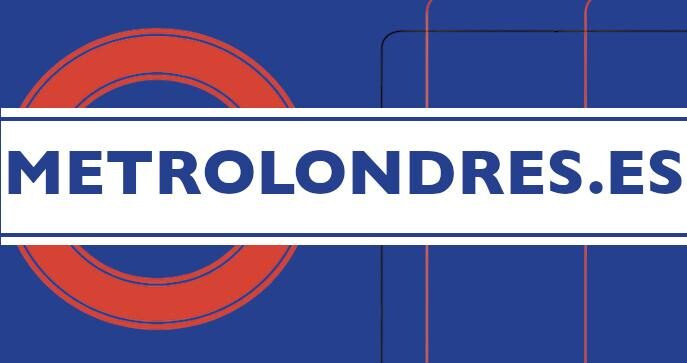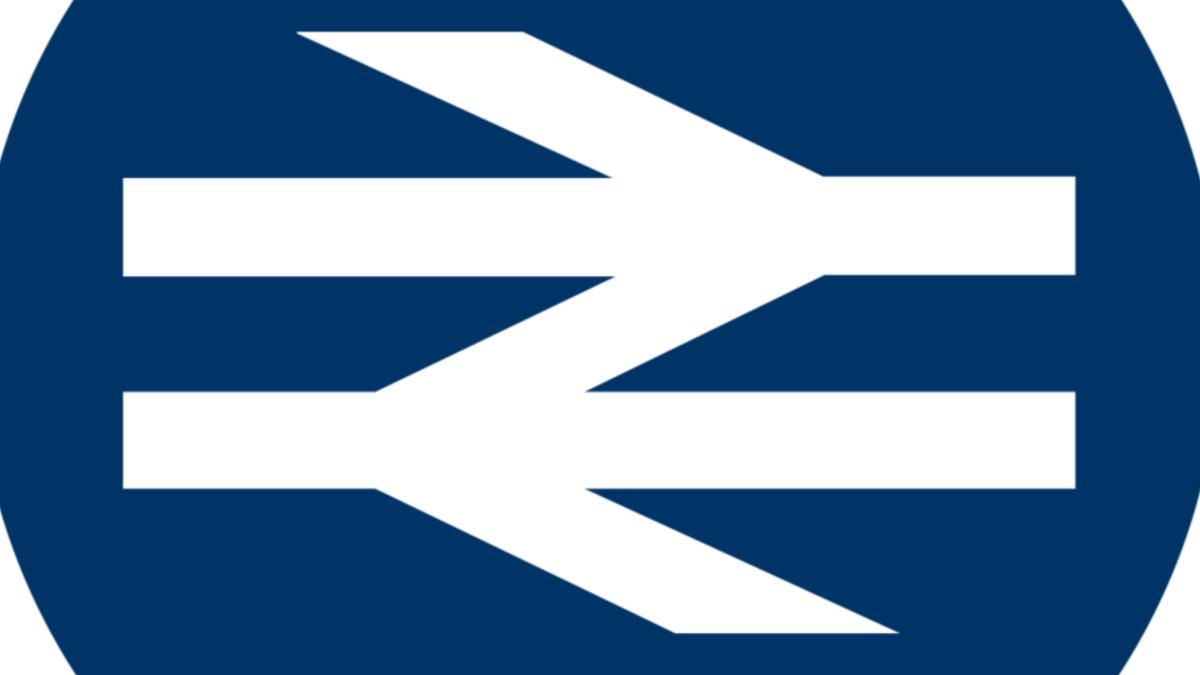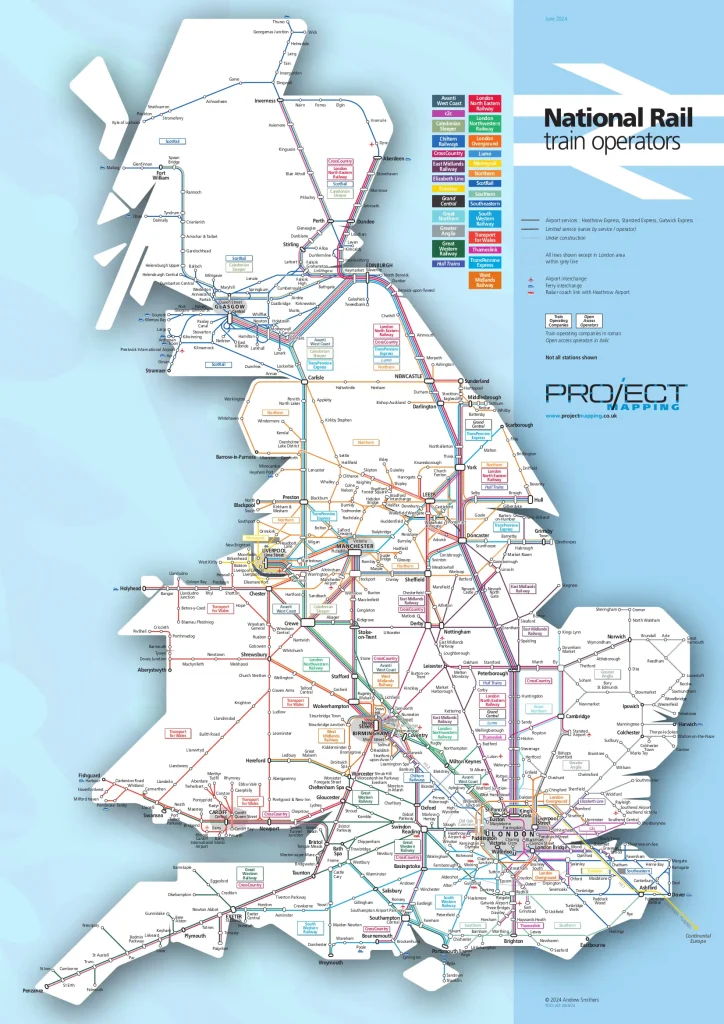National Rail is an extensive and complex network connecting London with the entire United Kingdom, providing both local and long-distance train services. Unlike the London Underground, which primarily operates within the city, National Rail allows passengers to travel from London to other cities and towns across the country and beyond, including destinations in Europe.
This article is a comprehensive guide to schedules, prices, payment methods, stations, and everything you need to know to use National Rail efficiently in London, whether you’re a tourist or a resident.

- National Rail Network and Stations in London
- National Rail Map in London
- National Rail Timetables
- National Rail Prices and Fares
- National Rail Payment Methods
- Key National Rail Stations for Tourists
- Recommendations for Tourists Using National Rail
- Travel Planning with National Rail
- Onboard Services and Amenities
- Connections and Accessibility
- International and Regional Connections
- Interesting Facts about National Rail
- In Summary
National Rail Network and Stations in London
London is home to nine main National Rail stations that serve as key hubs for travelers heading to various regions of the UK and Europe:
- London Paddington: Connects to destinations in the west of England, including Reading, Oxford, and Bristol, and also provides connections to Heathrow Airport via the Heathrow Express.
- London Euston: Main departure point for the Midlands and North West England, such as Birmingham and Manchester.
- London King’s Cross: Links to the northeast of England and Scotland, including destinations like York, Leeds, and Edinburgh.
- London Liverpool Street: Access to destinations in the east of England, such as Cambridge, Norwich, Southend, and Stansted Airport.
- London Victoria: Connects to the south of England, including Brighton, Gatwick, and Dover. Also offers direct services to Gatwick Airport via the Gatwick Express.
- London Waterloo: Mainly serves destinations in the south and southwest of England, such as Winchester, Bournemouth, and Portsmouth. It is the largest station in the UK and a key operational hub for long-distance services and local trains.
- London Bridge: Connects to destinations in the southeast of England, including Brighton and Hastings.
- London St Pancras International: Departure point for high-speed trains to Europe, such as Paris and Brussels, as well as domestic destinations like Nottingham and Sheffield.
- London Marylebone: Connects London to destinations in the northwest of England.
- Charing Cross: Serves the southeast region of England and provides direct connections to Gatwick Airport.
National Rail Map in London

You can download the updated maps from here.
National Rail Timetables
National Rail operates a wide range of services with schedules varying according to the line and destination. Most trains run from early morning until late at night, with timetables adjusted based on the day of the week and demand.
Days of Operation and Train Frequency:
- Monday to Friday: Most National Rail services start around 5:00 a.m. and continue until midnight. During peak hours (approximately from 6:30 a.m. to 9:30 a.m. and from 4:00 p.m. to 7:00 p.m.), trains are more frequent.
- Saturday: Timetables are similar to weekdays, but some routes may have fewer frequencies.
- Sunday: Trains usually start later, around 7:30 a.m., and the service may be less frequent than during the week.
Train Frequency:
- On the main commuter routes around London, trains usually run every 10 to 15 minutes during peak hours.
- For long-distance services, frequency varies significantly depending on the route and demand. Some destinations may have hourly services, while others may have fewer services throughout the day.
National Rail Prices and Fares
National Rail fares vary depending on distance, class of service, and time of day. Below are some of the most common fares and discounts.
Fare Zones:
National Rail uses a pricing system based on the distance traveled, with fares increasing according to the number of zones or kilometers crossed.
Travel Prices:
- Travel within London: Fares are generally lower and comparable to those on the London Underground. A typical journey in Zone 1-2 costs around £2.80 with an Oyster card or contactless payment.
- Long-distance travel: Prices can vary significantly. For example, a journey from London to Manchester can cost between £30 and £150, depending on the schedule, advance booking, and class of train.
Discounts and Reduced Fares:
- Railcards: National Rail offers various discount cards, such as the 16-25 Railcard or the Senior Railcard, which offer a 30% discount on most journeys.
- Children under 5: Travel free when accompanied by an adult with a valid ticket.
- Families and groups: Discounted fares are available for groups of three or more people traveling together.
National Rail Payment Methods
National Rail offers various payment options to suit passengers’ needs.
Paper and Digital Tickets:
- Paper Tickets: Can be purchased at any train station, either at the ticket counters or from ticket vending machines.
- Digital Tickets: Can be purchased online through mobile apps, such as the Trainline app, and received via email or directly in the app.
Reduced Price Tickets:
- Advance Tickets: These tickets are purchased in advance and are usually cheaper. They are ideal for travelers who can plan their trips ahead of time.
- Off-Peak Tickets: Valid for travel outside peak hours and are cheaper than peak-time tickets.
- 2×1 Discounts: Presenting National Rail tickets allows travelers to access 2-for-1 promotions at various tourist attractions in London, which can result in significant savings.
- Railcards: Several types of railcards (such as the 16-25 Railcard, Senior Railcard, and Two Together Railcard) offer a 33% discount on most train tickets.
Oyster Card and Contactless:
- Oyster Card: Can be used to pay for National Rail journeys within London and surrounding zones. It is loaded with credit and used by touching the card on the entry and exit readers at stations.
- Contactless Card: Contactless debit or credit cards are also accepted for payment, with the same fares as the Oyster card.
- Apple Pay and Google Pay: Accepted in the same way as contactless cards.
Key National Rail Stations for Tourists
- King’s Cross: Connection to destinations in Northern England and Scotland, as well as the famous Harry Potter platform 9¾.
- Victoria: Departure point to Windsor Castle and Brighton, also near Buckingham Palace.
- Paddington: Direct connection to Heathrow Airport via the Heathrow Express.
- Liverpool Street: Access to the historic city of Cambridge and the beaches of Southend.
- St Pancras International: Departure point for Eurostar trips to Paris, Brussels, and Amsterdam.
Recommendations for Tourists Using National Rail
- Book in advance: For long-distance travel, booking in advance can save a lot of money. Advance tickets are usually cheaper and guarantee a seat.
- Check schedules: Use apps and websites like National Rail Enquiries to check schedules and avoid surprises.
- Consider a Railcard: If you plan to make several trips, a railcard can offer great savings.
- Explore outside London: National Rail makes it easy to explore destinations like Bath, Brighton, and Cambridge, which are within a short train ride from London.
- Check departure and arrival stations: London has several main stations, so make sure you know where your train departs and arrives.
- Use the Journey Planner: Use this online tool to plan your trip, check schedules, and prices.
- Avoid peak hours: Generally, peak hours are from 6:30 to 9:30 and from 16:00 to 19:00 on weekdays. Off-Peak tickets are cheaper and allow travel at less crowded times.
- Use mobile apps: Download apps like Trainline for real-time schedules and to buy tickets.
- Keep your belongings safe: It is always advisable to keep an eye on your belongings, especially in crowded stations.
Travel Planning with National Rail
To facilitate travel planning, National Rail provides a tool called the Journey Planner on its website.
With this tool, travelers can check schedules, fares, and create customized itineraries.
In addition, mobile apps like Trainline and the National Rail app offer real-time schedules, delay notifications, and the option to buy tickets from your mobile device.
Onboard Services and Amenities
National Rail trains offer a variety of amenities designed to enhance the passenger experience:
- Wi-Fi: Many trains offer free or paid internet access, although availability may vary depending on the route.
- Comfortable seats: Most trains have cushioned seats and tables for working or dining during the journey.
- Food and drink services: Some long-distance trains have cafes or onboard catering services, offering a variety of food and drink options.
Connections and Accessibility
National Rail is well integrated with other modes of transportation in London, making connections easy for travelers:
- London Underground: Many train stations have direct connections to Underground lines, providing easy access to different parts of the city.
- Buses: Major stations are often near bus stops, allowing easy transfer between modes of transportation.
- Commuter trains: National Rail services are combined with commuter trains that operate in suburban areas.
Additionally, National Rail strives to be accessible to all travelers. Most major stations are equipped with ramps, elevators, and assistance services for people with reduced mobility. It is advisable to check the National Rail website for specific information on the accessibility of each station.
International and Regional Connections
National Rail not only connects London with other parts of the UK but also provides international links:
- Eurostar: Departing from London St Pancras International, Eurostar connects London with Paris, Brussels, and Amsterdam.
- Connections to Scotland and Ireland: Through services like Virgin Trains and Caledonian Sleeper, National Rail offers direct connections to Scotland and Northern Ireland.
Interesting Facts about National Rail
- The World’s Oldest Network: National Rail is part of the world’s oldest railway network, with the first train line inaugurated in 1825.
- Night Trains: Some long-distance services offer night trains, known as “Sleepers,” allowing passengers to travel while sleeping, especially to Scotland and Cornwall.
- Historic Stations: Many National Rail stations in London, such as King’s Cross and St Pancras, have a rich architectural and cultural history, making them attractions in their own right.
- Airport Connections: In addition to Heathrow, National Rail connects London with other major airports, such as Gatwick and Stansted, making access easier for international travelers.
- High-Speed Services: National Rail operates some of the fastest trains in the UK, like the Javelin, which connects London to Kent at speeds of up to 140 mph.
In Summary
National Rail is an integral part of London’s transport system, connecting the capital with the rest of the UK. With a variety of fare options, payment methods, and routes, it offers residents and tourists an efficient and comfortable way to travel. Whether you are planning a short trip to a nearby city or a longer adventure across the country, National Rail will provide you with a comfortable and fast journey.


